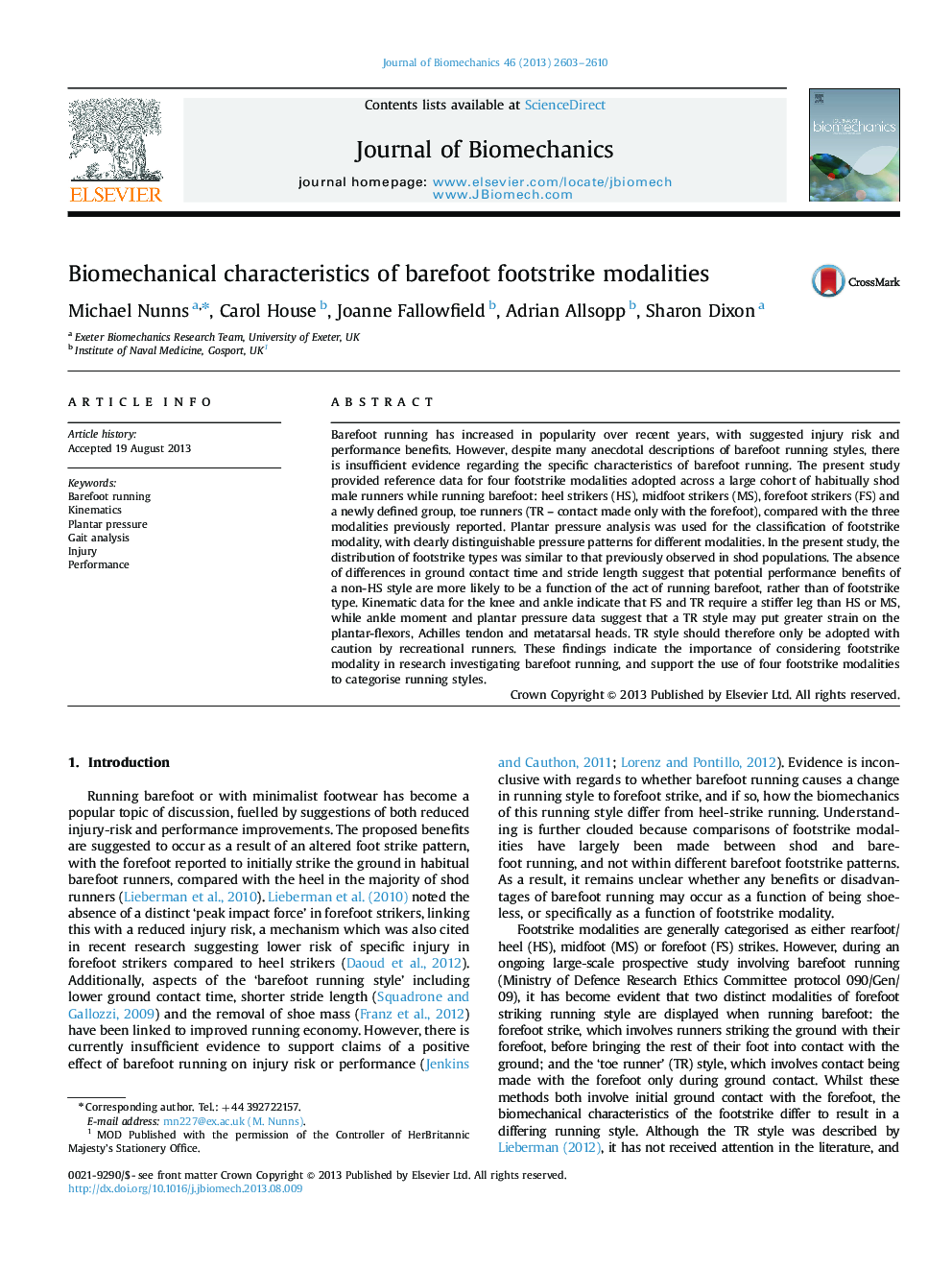| Article ID | Journal | Published Year | Pages | File Type |
|---|---|---|---|---|
| 10432305 | Journal of Biomechanics | 2013 | 8 Pages |
Abstract
Barefoot running has increased in popularity over recent years, with suggested injury risk and performance benefits. However, despite many anecdotal descriptions of barefoot running styles, there is insufficient evidence regarding the specific characteristics of barefoot running. The present study provided reference data for four footstrike modalities adopted across a large cohort of habitually shod male runners while running barefoot: heel strikers (HS), midfoot strikers (MS), forefoot strikers (FS) and a newly defined group, toe runners (TR - contact made only with the forefoot), compared with the three modalities previously reported. Plantar pressure analysis was used for the classification of footstrike modality, with clearly distinguishable pressure patterns for different modalities. In the present study, the distribution of footstrike types was similar to that previously observed in shod populations. The absence of differences in ground contact time and stride length suggest that potential performance benefits of a non-HS style are more likely to be a function of the act of running barefoot, rather than of footstrike type. Kinematic data for the knee and ankle indicate that FS and TR require a stiffer leg than HS or MS, while ankle moment and plantar pressure data suggest that a TR style may put greater strain on the plantar-flexors, Achilles tendon and metatarsal heads. TR style should therefore only be adopted with caution by recreational runners. These findings indicate the importance of considering footstrike modality in research investigating barefoot running, and support the use of four footstrike modalities to categorise running styles.
Related Topics
Physical Sciences and Engineering
Engineering
Biomedical Engineering
Authors
Michael Nunns, Carol House, Joanne Fallowfield, Adrian Allsopp, Sharon Dixon,
